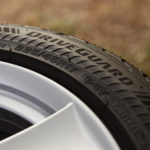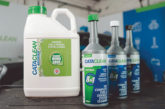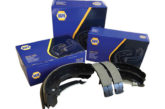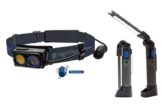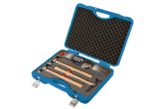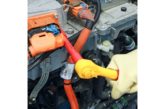Laying claim to being the first tyre manufacturer to introduce run flats in the 80s, Bridgestone says it is now continuing to pioneer the technology, in the form of its DriveGuard tyres. Here, the company explains more.
Run-flat technology has come a long way since Bridgestone became the first tyre manufacturer to roll-out the concept back in the 1980s.
Bridgestone’s DriveGuard range provides solutions to the real problems drivers face on the roads. The concept remains the same, but the performance features of DriveGuard have taken the technology even further.
With reinforced sidewalls and proprietary cooling fin technology, DriveGuard tyres provide drivers with additional peace of mind by reducing the risk of an accident caused by a puncture. But the biggest benefit, in simple terms, is the fact that millions more motorists have access to technology that had previously been the preserve of premium car buyers. And it’s vital technology, providing a level of safety and convenience that’s increasingly important these days.
It allows motorists to drive for 50 miles at speeds of up to 50mph following a puncture and is designed to be fitted on to all passenger cars to remove concerns relating to tyre damage (including in sidewall and tread areas).
It is not restricted to a factory fitment on specific brands or car models and can be fitted onto most cars equipped with TPMS, which has been mandatory in Europe on new cars since November 2014. And now, Bridgestone has announced the expansion of DriveGuard, making it available on its main product lines. This is a leap forward for everyday drivers in terms of safety, convenience and peace of mind as DriveGuard RFT allows them to keep going even in the event of a puncture. There are two key factors that have aided the development of DriveGuard – experience and technology.
Experience
Bridgestone’s first Run-Flat Technology tyre was introduced in the early 1980s with the aim of keeping disabled drivers’ vehicles mobile, even after complete air loss. The Porsche 959 was the first mass-produced vehicle equipped with Run-Flat Technology tyres, making them standard equipment in 1987. In this early application, these tyres could not offer the smooth, comfortable ride as compared to conventional tyres.
Striving to solve this problem, Bridgestone developed a second-generation of Run-Flat Technology tyres in 2005, which offered improved riding comfort. In 2009, Bridgestone introduced new technology in the third generation Run-Flat Technology tyres, which offered almost the same riding comfort as conventional tyres. In 2016, this vast experience allowed Bridgestone to bring a Run Flat Technology tyre to the market, where ride comfort is now comparable to a standard tyre.
Technology
The main technological advances are new ply technology, sidewall cooling fins and the use of NanoPro-Tech technology in the tread and sidewall re-enforcing rubber. In the past, Run-Flat Technology tyres have faced the challenge of minimising the heat generated through the deformation of rubber.
During vulcanisation, carbon black and silica molecules have a tendency to ‘clump together’, leading to inconsistencies in the rubber strength and performance – the use of NanoPro-Tech allows for a more even distribution of these molecules, thus achieving a fully optimised rubber compound.
On DriveGuard, this new sidewall- reinforced optimised rubber reduces friction between carbon molecules, thus reducing heat generation. Compared with second-generation sidewall-reinforced rubber, the new rubber can reduce heat generation by more than half when driving on tyres that have lost air pressure. This paves the way for higher profile sizes to be used with thinner sidewall re-enforcement, which is ideal for the medium size/family car market.

